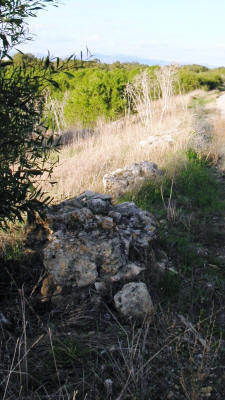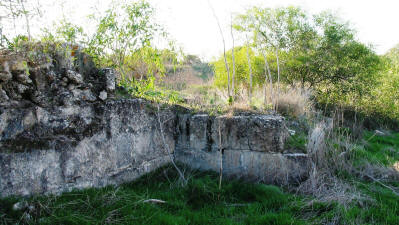The Walls and Harbour
Salamis, Near Famagusta, North Cyprus
 |
| Early City Wall |
There are, in fact, two city walls at Salamis, the early and the late.
The remains of the early walls can be seen to the south and west of the complex. These date back to the very early days of Salamis. The late walls, however, are much more recent. These surround the city centre, and were built in the 7th century as a protection against Arab raids.
To the southeast of the city lies the oldest of the harbours of Salamis. This harbour was protected by breakwaters. To the north of this, there is a later, Roman, harbour.
Even today, as you look out to sea, you can see a reef that lies parallel to the shore for a distance of about 100m, forming a lagoon to the south of it. The two harbours were at the north and south of this lagoon. The harbour area was excavated in 1971 and 1973.
 |
| A Late City Wall |
During the excavations, two streets were found, one parallel to the modern shore, and a second one meeting it. Towards the south of the lagoon area, architectural remains were found, indicating that at the time of construction, the land level was higher. There was quite an area of silting, leading to the belief that there is still much to be discovered in this area.
There is some evidence that the city wall extended along the breakwaters of the two harbours, and possibly the natural ridge which separated the lagoon from the sea, forming the usual "closed harbour" type.
The lagoon between the two harbours was different to what we see today. Part of it, perhaps the whole area, north of the reef was terrestrial, as evidenced by the structures found there. All of this, however, is conjecture, as so much still lies unexcavated.
See the location in Google maps.
Return to Salamis Index, or Famagusta Index.